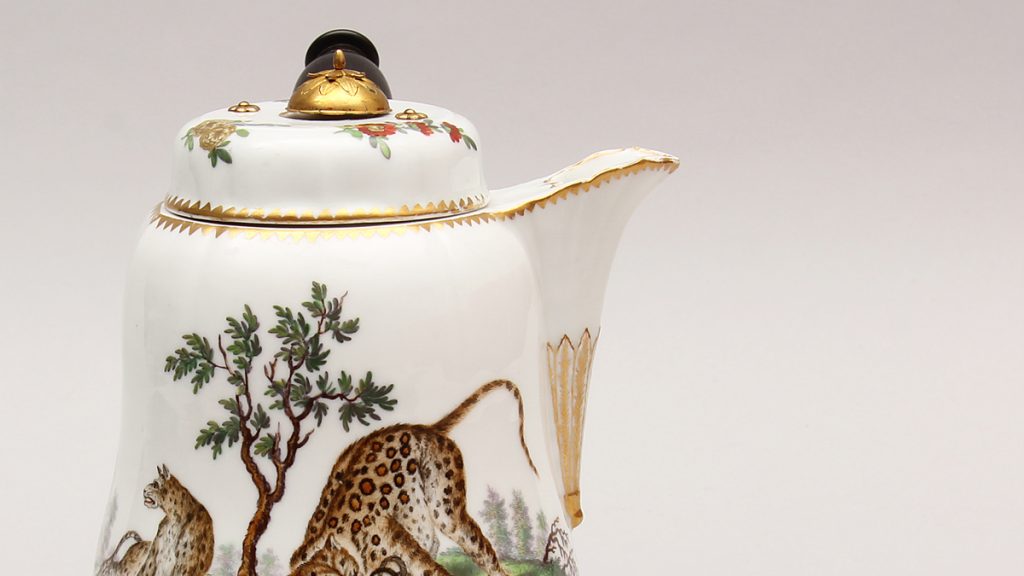Soft- and hard-paste European porcelain manufactories which do not appear as separate categories on this site can be found in this section.
Soft-paste porcelain continued to be made in Europe during the first three quarters of the eighteenth century. However, once the components and technology of the arcanum (the secrets of porcelain production) became known, and deposits of kaolin were found, hard-paste porcelain manufactories sprang up all across Europe in the second half of the eighteenth century. Porcelain manufactories from Belgium, the Netherlands, Denmark, and Russia are represented in the collection.
Most eighteenth-century European porcelain manufactories are found in the Gardiner Museum, largely thanks to the gift of the heirs of Dr. Hans Syz, who donated 430 figures and wares from 56 porcelain manufactories.
1. Chocolate Pot (detail), Denmark, Copenhagen, c.1775, Gift of George and Helen Gardiner, G83.1.1104
2. Chocolate Pot (detail), Denmark, Copenhagen, c.1775, Gift of George and Helen Gardiner, G83.1.1104
3. Wall Vase (detail), Austria, Du Paquier, c.1730, Gift of George and Helen Gardiner, G83.1.1220
4. Sunflower Dish (detail), England, London, c.1755, Gift of George and Helen Gardiner, G83.1.1108.1-2
5. Ewer and Basin (detail), France, Sèvres, c.1758, Gift of George and Helen Gardiner, G84.1.2
6. The Monkey Orchestra (detail), Germany, Dresden, Meissen, c.1753-1775, Gift of George and Helen Gardiner, G83.1.675.1-.18
7. Sugar Box with Armorial (detail), Italy, Doccia, c.1745-1750, Gift of George and Helen Gardiner, G83.1.1105
8. Gardener with Watering Can (detail), Switzerland, Zurich, c.1770, The Hans Syz Collection, G96.5.421
9. Scowling Harlequin (detail), Germany, Meissen, c.1738-40, Gift of George and Helen Gardiner, G83.1.907
10. Teapot (detail), Germany, Meissen, c.1730, decorated at Lauche, Gift of George and Helen Gardiner, G83.1.764
11. Exotic Bird (detail), England, London, St. Jame's Factory, c.1751-1754, Gift of George and Helen Gardiner, G83.1.1005

